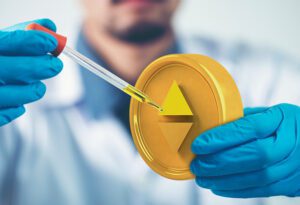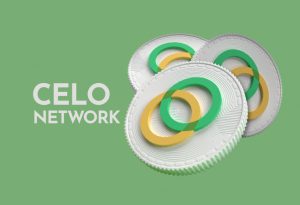
Table of Contents
ToggleAmong all the decentralized platforms in the crypto world, Augur is one of the most prominent. In this article we will talk about what it is and how it works. In a nutshell, it is a decentralized and open source platform, based on Ethereum blockchain technology.
The objective of this platform is to predict the future of certain markets, events, companies, among other financial instruments. Users who have predicted a diagnosis and this is fulfilled correctly, will receive a reward in the form of REPs, which is the native token of the Augur network.
Augur was designed to break with the current limits of speculative markets that are usually centralized and controlled by a funding entity. For this reason, many users are swayed by speculative reports that are manipulated and of low credibility.
To solve these problems, the Augur network brings a prediction mechanism that is based on ‘crowd wisdom‘. This means that any user can create a decentralized prediction market on their own platform just as they can pose a specific question to the community. When this question is posed, users can buy shares of each of the possible options guided by the prediction. If the outcome of the event is fulfilled, they will receive a reward.
History of Augur
Augur’s history began in 2015 when it was created by two developers, who formerly developed Ethereum. These are Jack Peterson, the lead developer, and Joey Krug, the senior back-end developer. Both remain active in the project. Peterson is a physicist with a PhD in philosophy while Krug is in the computer science field.
The development of Augur was started by the Augur community. According to ICO Beach, this team consisted of 13 professionals from different areas, although most of them were focused on the development field. Later the project was released and became an open source project where other developers could also participate. Being open source, it is available for constant evolution. In fact, Augur recently released the second version of Augur with Ox protocol integration.
The network token, REP, was created later that year and was offered to the public in a massive sale that took place in August 2015. From that moment on, the coin was widely accepted.

How does Augur work?
With the system of mass wisdom that Augur presents, it provides the necessary tools to take advantage of the knowledge of large groups of users. All this operation has a scientific basis, it is not just a theory.
It is scientifically proven that if we ask enough people about an event, the average answer is usually more accurate than the answer of an expert. That is why this system provides access to millions and millions of reports that can predict the future.
As for its technology, the platform is based on the Ethereum blockchain and, of course, its token is based on the ERC-20 standard, which allows it to execute the well-known smart contracts.
It is important to note that Augur is about the largest Decentralized Application (dApp) created on the Ethereum network. Its code is based on a P2P (Peer-to-Peer) network rather than on a decentralized server.

How are Augur’s predictive markets generated or used?
The first step for any user interested in participating in the Augur network is to download the Augur desktop client. This client has all the necessary elements to start building a predictive market. Below we will see the steps to follow:
- First we must choose an event. This event can be anything we can think of, from when Bitcoin will set a new all-time high to which team will win the next soccer match.
- As a second step, we will create a market. Thanks to Augur, we have several options, from simple yes or no answers to a numerical range or specific elements of a selection.
- We must then buy and sell shares to participate. To do this, users must establish a position according to their expectations of the event in question. These positions can be buy or sell to go “long or short”. Payments will be made in Ethereum directly.
- The next step is the user report. In this part, the reporter analyzes, records and reports the results of the event. This is where REP tokens are deposited, which can be lost in case of a wrong answer. The reporter profits from the commissions. Another form of profit is when a user refutes your prediction and a dispute is entered into.
- We only have to win or lose based on our prediction. Depending on the winning outcome, the smart contracts will release the winnings if they are correct. Otherwise, the funds wagered will be lost.
What is REP? The native currency
On the other hand, we have its REP token. Said token is the native token of the Augur ecosystem and, as mentioned above, reporters use it during the process of reporting or disputing the results of an event.
This token was generated for two basic purposes. Its purposes are to serve as a commission applicable to each user who participates in a prediction and as the reward for members who provide accurate and reliable information on upcoming forecasts. In this way it serves as an incentive for users on the platform and increases trust.
Its maximum circulating amount is exactly 11,000,000 REP coins. It does not have a mining system, as the maximum amount was reached in the 45-day ICO in 2015.
To buy REP you can access any of the most popular exchange houses and exchange it, for example, for Ethereum.








